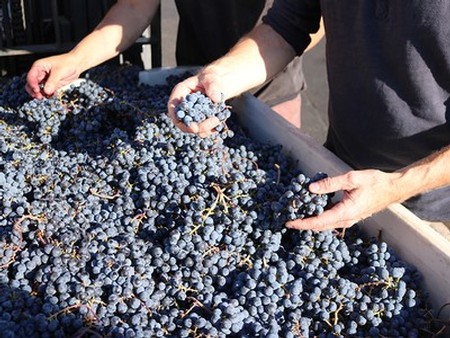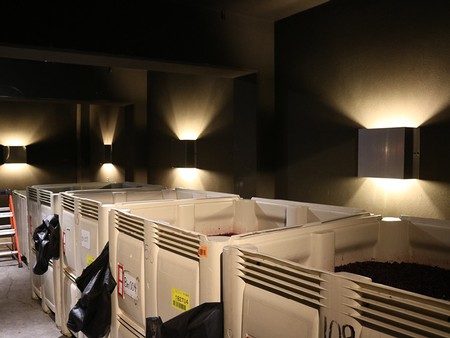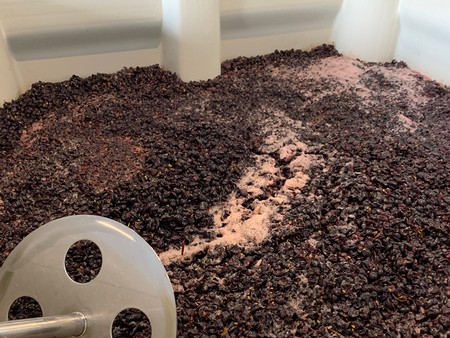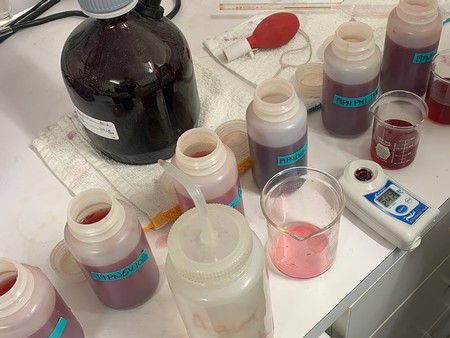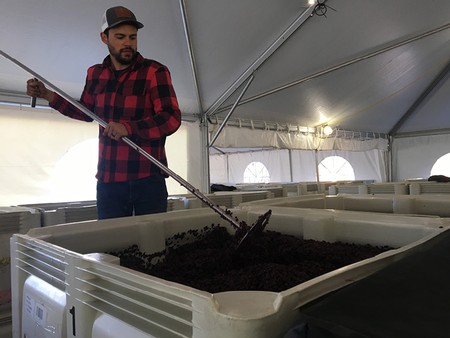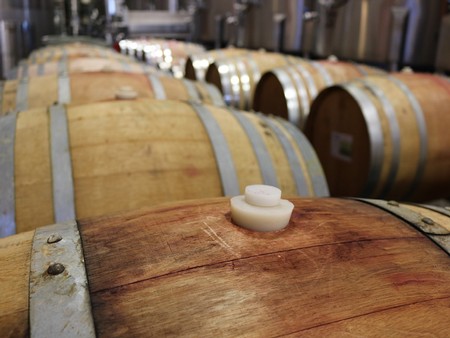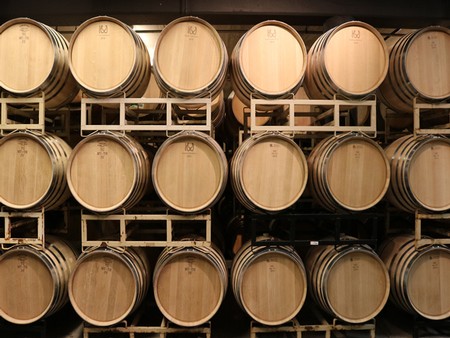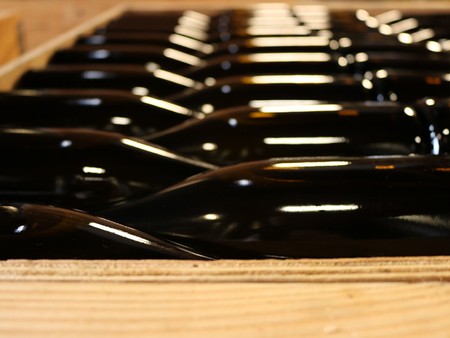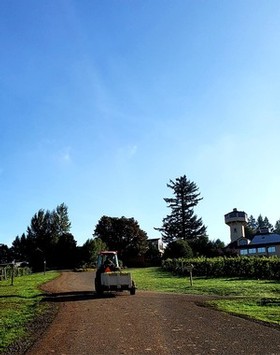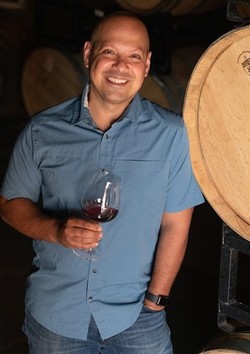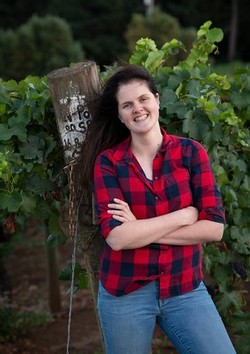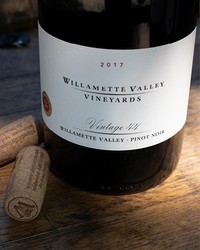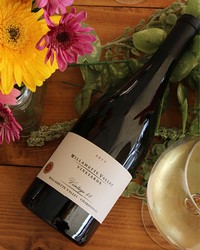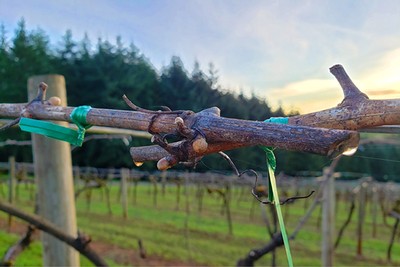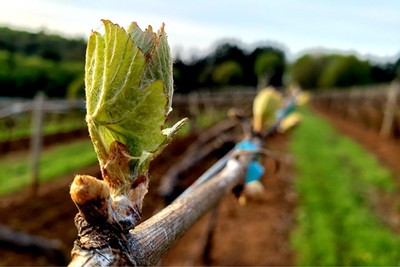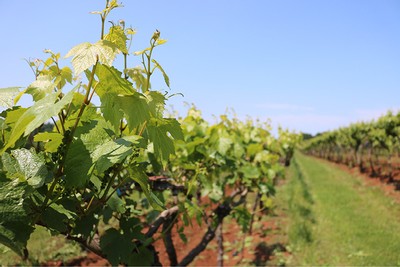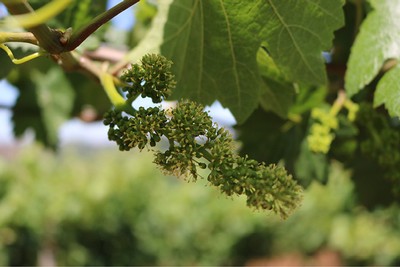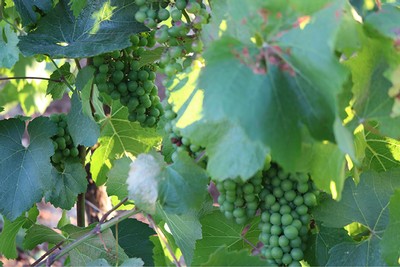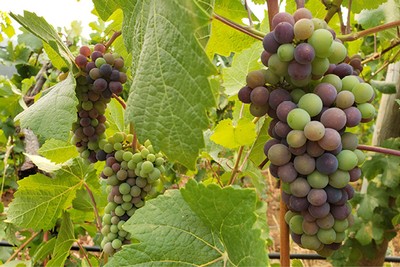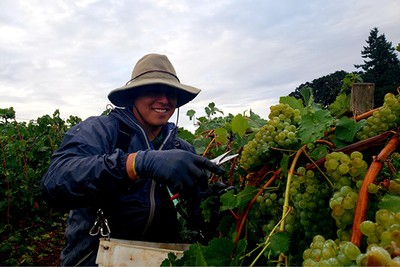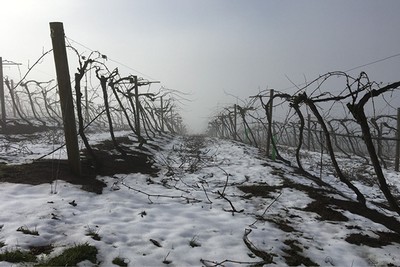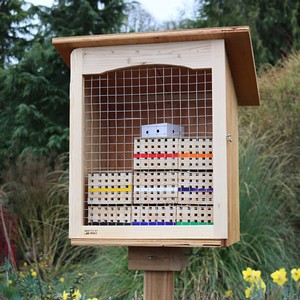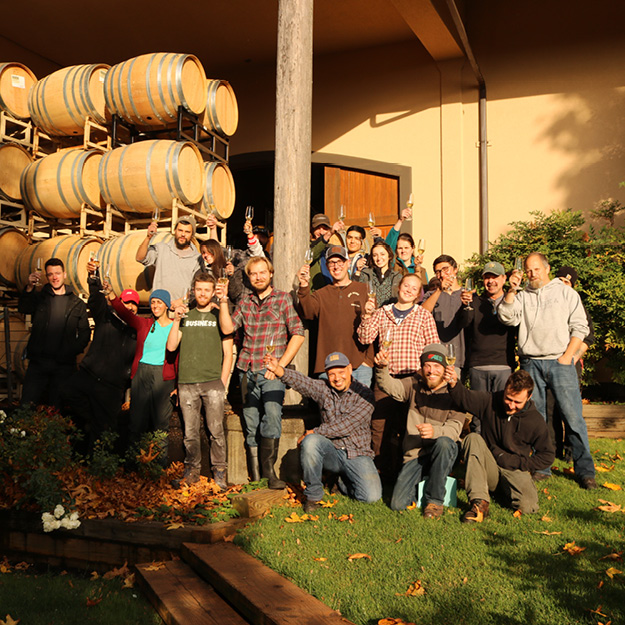Vines During Winter Dormancy
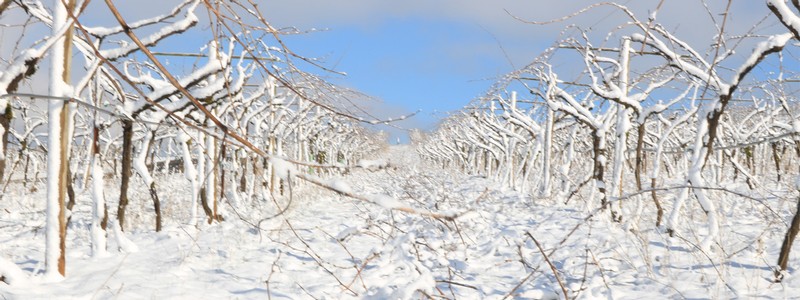
Although dormancy in the vineyard can make the vines seem stagnant and lifeless, there is actually a lot of activity happening beneath the surface. A sleeping vine is still a working vine! The dormancy phase helps vines tolerate the cold days of winter while also preparing them for the bud break, flowering and rapid cane growth that occurs in the spring.
Once harvest is over and all clusters have been picked, the vines move their attention to preparing for the cold winter ahead. The vines begin this process by growing new roots, also known as root flush, to absorb as many nutrients from the soil as possible while their remaining leaves continue photosynthesis. As the temperatures begin to drop, the water and nutrients within the vine move into the trunk and roots, causing the canes and cordons to become cold and develop hardiness (turning brown in the process). Sugars and protein complexes store themselves in the trunk creating cryoprotectants, a substance that prevents the freezing of the plant tissue. This storage of carbohydrates gives the vines the energy necessary for bud break in the spring.
Once the temperatures steadily increase, the vines once again show signs of life. The stored sugar in the trunk turns to sap and moves through the vine, escaping from the open pruning cuts — a clear signal that bud break is only days away. As bud break occurs, the vines are dotted with the first sign of green and will begin growing rapidly thereafter.
After Harvest - From Vine to Barrel
Once September rolls around and harvest begins, the jam-packed weeks of picking, sorting, crushing and fermenting fly by. With so much happening in such a short amount of time, it can be hard to follow all the steps in the winemaking process that occur after the fruit is harvested. Each step on the journey from vine to barrel (detailed below) is crucial to making our award-winning classic Oregon wines.
Processing Grapes
Grapes are transported to the production pad at the Estate from our different blocks on property and single-vineyard sites and are then sorted for quality. Wine grapes used to make our Pinot Noirs (excluding our Whole Cluster Pinot Noir) and other red wines are put through the crusher destemmer, then the juice (called must at this point) is placed with the skins into small bin fermentation containers. Wine grapes for our white wines are immediately sent to the press, with the skins separated from the juice right after pressing.
Sorting grapes as they arrive at the production pad.
Fermentation tanks in wine cellar.
Fermentation Tanks
After pressing, the juice for white wine and rosé is left to cold settle for a day, then racked off it’s solids into stainless steel tanks or barrels for fermentation. Reds will be placed in small fermentation bins or tanks, with the grapes separated from the stems or as whole cluster for our Whole Cluster Pinot Noir.
Yeast
Once in tanks, yeast is added. Yeast consumes the sugar from the grapes and produces ethanol, carbon dioxide and other compounds, such as the esters (a chemical compound derived from acid) that create each wine's unique bouquet. We use a few of different yeast strains, trying to work with yeast that are neutral in order to let the fruit express its uniqueness if it's growing site.
Adding yeast to grapes in fermentation bin.
Tracking fermentation progress in wine lab.
Fermentation Begins
Once the yeast is added, fermentation can begin. Red wines ferment at warmer temperatures than white wine, usually between 80-90 degrees, while white wine ferments at about 50 degrees. Red wines are purposefully kept warm to maximize the amount of color and phenolic compounds extracted from the skins, while whites and rosé are kept cold to preserve their fruit-forward notes. While the red wine ferments, carbon dioxide is released and remaining grape seeds and skins rise to the surface.
Punchdowns
Once fermentation is underway, punch downs for red wines can begin. Our cellar workers use long metal poles with round disks at the bottom to submerging the grape seeds and skins back into the juice to extract color and aroma. Punchdowns are done twice a day and last anywhere from 12-15 days.
Punching down grape skins and seeds to extract color and aroma.
Barrels ready for wine to be transferred from fermentation bins and tanks.
Wine is Moved into Barrel
White wines are left on their lees, which consists of no longer actively fermenting yeast, to keep the wines fresh and develop complex flavors and aromas. Reds are moved from their small fermentation bins to the press to separate grape skins from the wine before being moving into barrel.
Barrels add flavors and aromas such as vanilla, hazelnut or toast. The oak from newer barrels can also heavily impact tannins and allow for slow ingress of oxygen, making the wine smoother and adding complexity. Some barrels are inoculated (the addition of active malolactic acid bacteria cultures) to allow for Malolactic Fermentation, converting the naturally occurring Malic Acid (think green apple) into Lactic Acid (think cream), softening a wine and adding additional levels of complexity. We do Malolactic Fermentation for almost all of our red wines, as well as most of our Chardonnay.
Aging
Wines are left to age, being continually monitored, stirred and tasted to track their progress. As they age, some wine evaporates and/or soaks into the wood of the barrel, so barrels are topped off throughout the process. As maturation concludes, winemakers taste test each barrel, working on creating blends that perfectly balance the varietal character, oak, and best express the varietal terroir of the vineyard site.
Wine barrels.
Sparkling wine bottles.
Filtering and Bottling
Wine is then racked and/or filtered before being sent to the bottling line. After bottling, wines are left in the cellar to mature in bottle until they are ready for release.
2019 Harvest Update
Harvest started on September 5th with a pick for our sparkling wines. Following a short break to allow further flavor and brix (sugar) development for our still wines, in mid-September, we battled early fall rains finding pockets of sunshine whenever we could to bring in the crop. In the cellar, fermentations are active and our Pinot Noirs are being punched down by hand twice daily to extract color and aromas before being put to rest in barrel. An early look shows that despite the rains, the color is concentrated and there is depth in flavors.
The past few vintages, we experienced warmer than average summers; however, 2019 has been a throwback to traditional Oregon summers and falls, with mild steady temperatures and no extreme heat spikes. The accumulated heat units of this vintage are most comparable to the 2018 vintage. The early onset fall rains created a challenging harvest, including condensing the pick times, but our incredible harvest crews timed their picks during the sun breaks giving the grapes just the right amount of time to develop complexity, rich color and concentration of flavors. Our winemakers expect the 2019 vintage to be an excellent representation of a classic Willamette Valley vintage.

But don’t just take our word for it. We popped into our Winemakers’ office and got their feedback on this year’s harvest!
Joe Ibrahim - Winemaker
What is your favorite part of harvest?
I love all of harvest! Leading into harvest, I love the anticipation of new wines and what will come of the new vintage. When I'm in the middle of it, I love the focus, challenges, problem solving and adrenaline. In the end, it's a great feeling to look back on all the hard work and I feel most proud of what we have accomplished working together alongside an amazing, passionate and dedicated team.
What is the most challenging part of harvest and why?
Every harvest has its own challenges; there are a lot of moving pieces to coordinate while keeping your eye on making world-class wines. We produce several small-lot wines and we make wine from many different varieties from nearly every growing region in the state!
Was there anything different or notable about this harvest that made it stand out from others you have worked on?
This fall had amazing weather leading up to harvest. The weather then turned rainy and cold just as the grapes were ripening, which caused us to rush and pick as fast as we could. We all felt the pressure of a compressed harvest window. I'm happy to say we managed to get everything in on time and the wines are looking really fantastic!
Everyone involved in harvest has to adjust to a new schedule. I am so grateful to our amazing team and their families for not just their willingness, but also their excitement to place their normal schedules aside for 4-6 weeks each year and join in the fun of making wines together that we are truly proud to share with everyone.
Gabi Prefontaine - Associate Winemaker
What is your favorite part of harvest?
My favorite part of harvest is visiting the different vineyard sites to decide on picking dates.
What is the most challenging part of harvest and why?
The most challenging part of harvest is when we have used all of our available fermentors, but we have additional fruit ready to come in. It is a game of Tetris on the production pad as receiving fruit timely is important to wine quality.
Was there anything different or notable about this harvest that made it stand out from others you have worked on?
The weather made harvest very challenging as we had to pick the same amount of fruit as the previous year, but had to bring that fruit in over the course of 4 weeks instead of 6 weeks. It was very challenging, but the fruit was ready and our team made it happen.
Our Duck made an honorary Beaver!
This will come as a surprise to you having seen our Founder in yellow and green all these years ... Jim Bernau (former UO Student Body President and avid Duck) received the Joan Austin Honorary Alumni Award from Oregon State University this past Thursday evening!
Jim's support of OSU started back in the mid-1990s when he made a personal gift to the university to establish the first professorship for fermentation science in the nation. His groundbreaking work on behalf of the Oregon wine industry and ongoing leadership was also cited in the granting of this recognition.
Jim says there is only one day a year he isn’t championing OSU research and academic programs — the Civil War.
As many of us at the winery are OSU grads, we are delighted to finally see our Founder in black and orange!
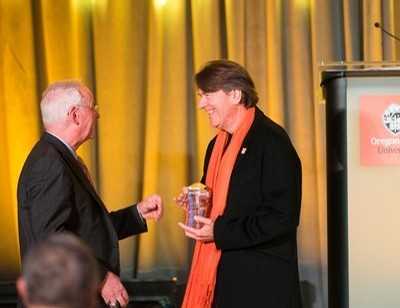
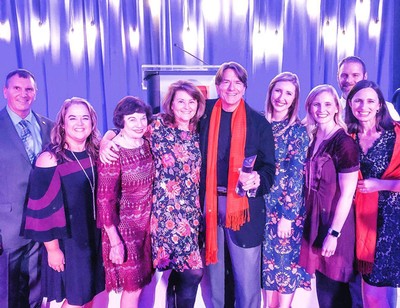
Pictured above: OSU President Ed Ray presenting Founder Jim Bernau with the Joan Austin Honorary Alumni Award (left). Founder Jim Bernau surrounded by our OSU Alumni Staff and friends Nicole Markel, Betty O'Brien, Jan Green Bernau, Caitlin Craig, Christine Clair, Chris Day and Cara Pepper Day (right). Photos by Hannah O'Leary.
Wine Pioneer Bill Fuller Makes Vintage 44 Wines at the Age 82
A passion for wine led Bill Fuller, Founder of Tualatin Estate Vineyard, to achieve a successful career in winemaking and by doing so, carved a path in the Oregon wine industry for other aspiring vintners. Continuing to inspire us, Bill is still making wine at age 82.
Bill’s Story
In 1971, Bill Fuller began exploring sites in the Willamette Valley and eventually moved from California to Oregon with his family to pursue his dreams of starting his own vineyard and producing cool-climate Pinot Noir from the Willamette Valley. As one of Oregon’s original winemakers, Bill planted the Tualatin Estate Vineyard in 1973 in Forest Grove, Oregon. The name “Tualatin” originates from the local indigenous people and means “gentle and easy flowing” referring to the Tualatin River that flows near Forest Grove.
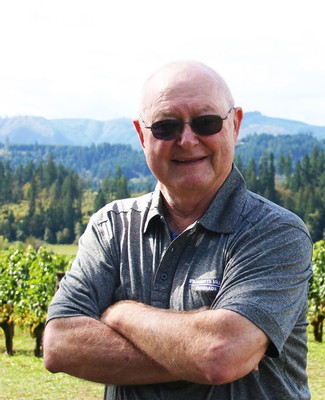
Many Firsts in the Industry
Bill Fuller’s Chardonnay and Pinot Noir both took home the “Best of Show” for the “Red” and “White” categories in the same year at the London International Wine Fair, a first-ever occurrence in the wine fair. His 1989 Chardonnay was the first Oregon wine to be named on the Wine Spectator Top 100 list.
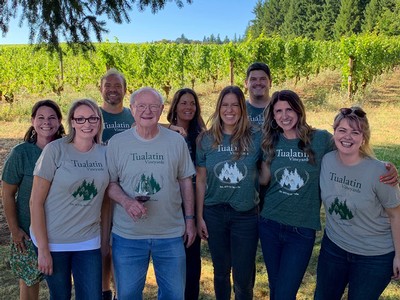
Creating our Vintage 44 Wines
Bill Fuller retired in 1997 after merging Tualatin Estate Vineyard with Willamette Valley Vineyards. Sixteen years later, Winery Director Christine Clair asked if Bill would come out of retirement as a Consulting Winemaker to assist in the making of wines produced from Tualatin Estate fruit. Bill agreed and rejoined the winemaking team to create the Vintage Pinot Noir and Chardonnay that expresses the classic techniques of his winemaking.
This August, we released the Vintage 44 Pinot Noir and Chardonnay made by Bill Fuller with a sold-out celebration at Tualatin Estate Vineyard. Bill shared some of his many winemaking stories and signed bottles for guests.
2017 Vintage 44 Pinot Noir
Ruby in color, the wine opens with aromas of ripe red cherries, raspberries, cedar and violets. Medium-bodied, silky textured with bright acidity that carries fresh red fruits, florals, earth and wood spice notes into the palate. The finish is long-lived with integrated tannins.
2017 Vintage 44 Chardonnay
Light gold in color, the wine opens with aromas of lemon, toasted pineapple, pine and spice. Rich and supple in texture, flavors of golden apple, vanilla, brown sugar and brioche lift from the palate and flow into a lingering, round finish.
Summer Wine and Fun
Summertime in Oregon is the perfect time to get outside, gather with friends and explore our beautiful state. We took a moment to ask some of our Winery employees about their favorite summer activity, and of course, favorite summer wine. We hope you enjoy hearing from our staff and get some inspiration for your next summer activity!
Joe, Head Winemaker
Favorite Summer Activity: Cooking on his smoker
Favorite Summer Wine: Estate Rosé of Pinot Noir
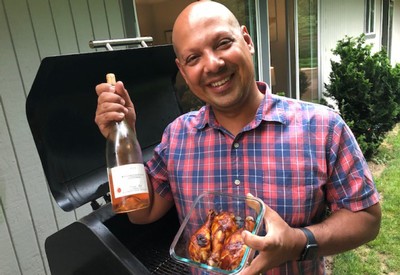
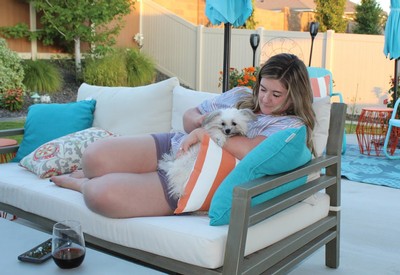
Tayler, Wine Club & Ownership Manager
Favorite Summer Activity: Relaxing outside with her dogs
Favorite Summer Wine: Bernau Block Pinot Noir
Cora, Tasting Room Associate
Favorite Summer Activity: Floating the river
Favorite Summer Wine: Pinot Blanc


Julia, Hospitality Coordinator
Favorite Summer Activity: Hiking at the coast
Favorite Summer Wine: Dijon Clone Chardonnay
Rich, Chief Financial Officer
Favorite Summer Activity: Camping on the Breitenbush River
Favorite Summer Wine: Pinot Gris
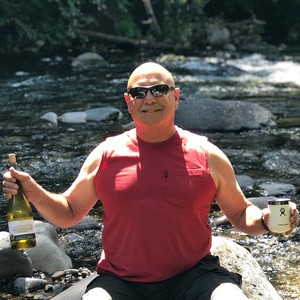
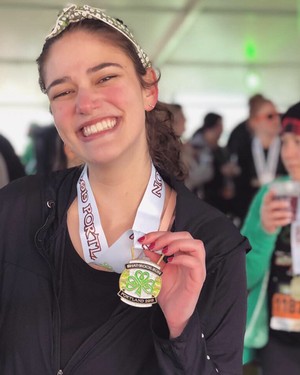
Kara, Wine Club Assistant
Favorite Summer Activity: Participating in local runs and 5Ks
Favorite Summer Wine: Pinot Blanc
Jose, Winery Ambassador
Favorite Summer Activity: Playing Sunday soccer
Favorite Summer Wine: Méthode Champenoise Brut
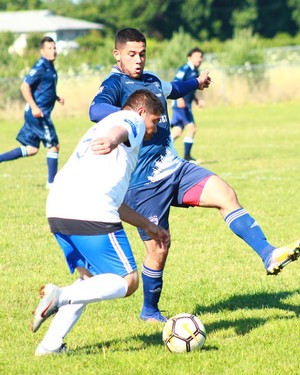

Spence, Estate General Manager
Favorite Summer Activity: Golfing
Favorite Summer Wine: Estate Rosé of Pinot Noir
Betty, Tasting Room Associate
Favorite Summer Activity: Trips to the Oregon Coast
Favorite Summer Wine: Tualatin Estate Pinot Noir
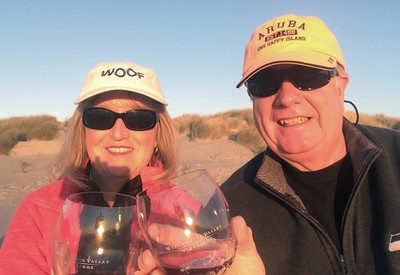
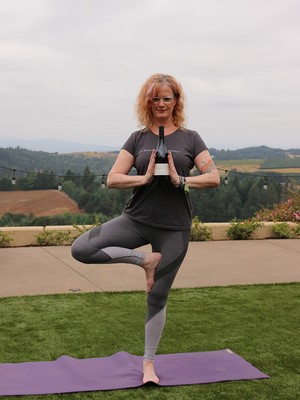
Suzanne, Winery Ambassador
Favorite Summer Activity: Teaching Saturday yoga at the vineyard
Favorite Summer Wine: Pinot Blanc
Stages in the Vines
Spring and summer are exciting times in the vineyard. The vines come back to life from their winter sleep, becoming lush and brilliant green as the temperature warms and the clusters develop into beautiful wine grapes. Each step in the growing process (detailed below) is important to the development of the clusters and hand-crafting quality wines.
Weeping:
As temperatures warm and the ground temperature reaches 50 degrees, stored starch in the vine turns into sugar, making sap. The sap moves through the vine and begins to escape from the open pruning cuts, creating “teardrops” of sap all along the vines. When vines begin to “weep” it is a sign that the growing process has begun (Indiana Uplands Wine Trail).
Budbreak:
Buds begin to form along the arms of the vine. These buds are small, fuzzy and brown at first, but as the temperature warms, they break open revealing a bright green shoot. Each shoot grows rapidly, making the vineyard hillsides a brilliant green color. The more leaves present on the vine soaking up the sun allows for more photosynthesis to occur, allowing the shoots to develop faster. Leaf development occurs simultaneously, leaves unfolding one by one as the shoot grows taller.
First Grooming:
Once the vines become dense with greenery, our vineyard crew will make their way through the vineyard to trim excess canes. Grooming excess canes helps regulate the amount of vegetation present on the vine. If there is too much vegetation, the nutrients from the vine are more thinly distributed, producing grapes that lack complexity and concentration of flavors. This is where the saying “quality over quantity” rings true.
Flowering:
Along with the large, wide leaves now on the vine, small clusters can be seen. Shortly thereafter, with assistance from the sun, tiny flowers spring to life on the cluster. As these flowers bloom, self-pollinate and lose their caps, small grape clusters will begin to form.
Berry Set:
Tiny green berries are now visible on the vines. The grapes are a bright green and about the size of a pencil eraser. They are also very hard and dense as they are mostly comprised of acid and short tannins. At this stage, almost all grape varietals look the same. The grapes clusters will continue to grow and develop for the next month or two.
Veraison:
Veraison is the second and most noticeable stage of grape ripening. During veraison, the grapes experience a big decrease in acid levels and a big increase in sugar levels. As they ripen, the grapes change color and our vineyard crew will once again prune the vine canopy and excess clusters to ensure the remaining clusters continue ripening well. Our winemaking team will then test the sugar level and tannin structure of the grapes to determine if the clusters are ready to be harvested.
Harvest:
Once our Winemaker decides the grapes are ready to be harvested, our expanded vineyard crews get to work. Wine grape varietals are harvested at different times depending on the type of grape, elevation at which they are grown and the style of wine being made. Grapes used for wines with brighter acidity, such as Brut or Pinot Gris, are harvested earlier when acid levels in the grapes are still high. Grapes for softer style wines, like Pinot Noir, are harvested later once acid levels in the grapes have had time to decrease and sugar levels have increased.
Dormancy:
When harvest is over, the work in the vineyards is not done. The winter months are an important part of the vineyard lifecycle too. After the vines enter a dormancy phase, our vineyard crew will carefully prune the vines to prepare for the next growing cycle. The clippings are eventually ground into mulch and recycled back to the earth. When the vines awaken in the spring, these thoughtful cuts will inspire growth in all the right places leading to better yields and increased air flow. In early spring, the vineyard team will begin tying the vine canes to our trellises to support new growth for the new vintage year. And thus completes the continual cycle in the vineyard.
Biodynamics
What is biodynamics?
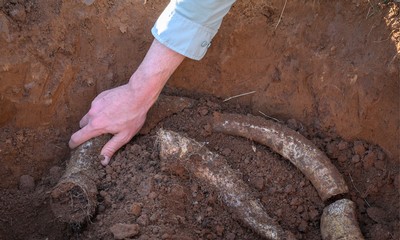 Biodynamics is a holistic, ecological and ethical way of farming used in all kinds of agriculture. It involves managing a farm utilizing the principles of a living organism. Applying biodynamics in the day-to-day operation of a farm, or in our case a vineyard, involves creating a farming system that is minimally dependent on outside materials to meet the needs of the land. Outside materials can include chemicals, pesticides and other harmful sprays. The biodiversity of the farm is organized so that the waste of one part becomes the energy for another. This results in an increase in the farm’s capacity for self-renewal and helps it become more sustainable (Demeter Association, Inc.).
Biodynamics is a holistic, ecological and ethical way of farming used in all kinds of agriculture. It involves managing a farm utilizing the principles of a living organism. Applying biodynamics in the day-to-day operation of a farm, or in our case a vineyard, involves creating a farming system that is minimally dependent on outside materials to meet the needs of the land. Outside materials can include chemicals, pesticides and other harmful sprays. The biodiversity of the farm is organized so that the waste of one part becomes the energy for another. This results in an increase in the farm’s capacity for self-renewal and helps it become more sustainable (Demeter Association, Inc.).
The process of becoming biodynamically certified takes approximately 3 years. Biodynamic certification can be done through the Demeter Association, which holds strict farm and processing standards in order to achieve certification.
How are we using biodynamic practices at Bernau Estate?
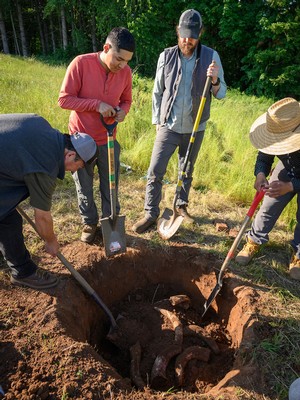 Each fall, female cow horns are stuffed with the manure from cattle native to the growing area and are buried for at least 6 months. During this time, the manure in the horns transform into a nutrient-rich preparation that is attuned to the land. In the spring, once the horns are unearthed, the preparation is enlivened with water and sprayed over the vineyard. Each horn produces enough preparation to cover 1 acre of land with multiple sprays throughout the growing season. Biodynamic Preparation 500 has shown to accelerate and improve the soil structure, microbiological activity, while enhancing a sense of place.
Each fall, female cow horns are stuffed with the manure from cattle native to the growing area and are buried for at least 6 months. During this time, the manure in the horns transform into a nutrient-rich preparation that is attuned to the land. In the spring, once the horns are unearthed, the preparation is enlivened with water and sprayed over the vineyard. Each horn produces enough preparation to cover 1 acre of land with multiple sprays throughout the growing season. Biodynamic Preparation 500 has shown to accelerate and improve the soil structure, microbiological activity, while enhancing a sense of place.
Viticulturist Clay Wesson, who is currently leading our biodynamic practices, used new plantings at our Bernau Estate as an opportunity to trial several different applications of biochar and biodynamic compost. Biochar is a plant-based charcoal used as a soil amendment and is known to offer a number of benefits for soil health. Many of these benefits are related to the extremely porous nature of biochar, including retention of both water and water-soluble nutrients, while aiding in the creation of habitat for many beneficial soil microorganisms.
We are currently striving to make the vineyard at our new Bernau Estate 100% biodynamic.
Mason Bee Boxes
This spring our team installed mason bee boxes at four locations including our Tualatin Estate Vineyard, Elton Vineyard, Bernau Estate Vineyard and Estate Vineyard in Turner. Led by our Viticulturist Clay Wesson, this project has turned into an exciting new addition to our sustainability programs.
With collaboration from local bee experts and winery volunteers, our team was able to work together to design and implement this exciting new project!
What are mason bees?
Mason bees are native to the Pacific Northwest and are known best for their productive pollinating and gentle nature. Mason bees flock to various plants including fruit and nut trees, spring berry blooms and flowers. Like many other native bee populations, mason bees are feeling the impact of environmental decline and decreasing habitat, so they are in need of a safe and sustainable environment to thrive.
What is the purpose of the Bee Boxes?
The pre-built bee boxes give the bees a safe space to build their home and nest. Mason bees are categorized as hole-nesting bees, which means they build their nests in pre-made holes found in their environment. Mason bees are also categorized as solitary bees, as they do not live in a hive as honeybees or many other common species do (Honeybee Conservancy).
Though the boxes can be placed in the vineyard at any time, the bees themselves are placed in the boxes in late March to early April, or when the temperature outside has consistently reached 55 degrees. The bees are placed in the box while they are in cocoons and as the temperature warms, will begin to emerge and build their homes.
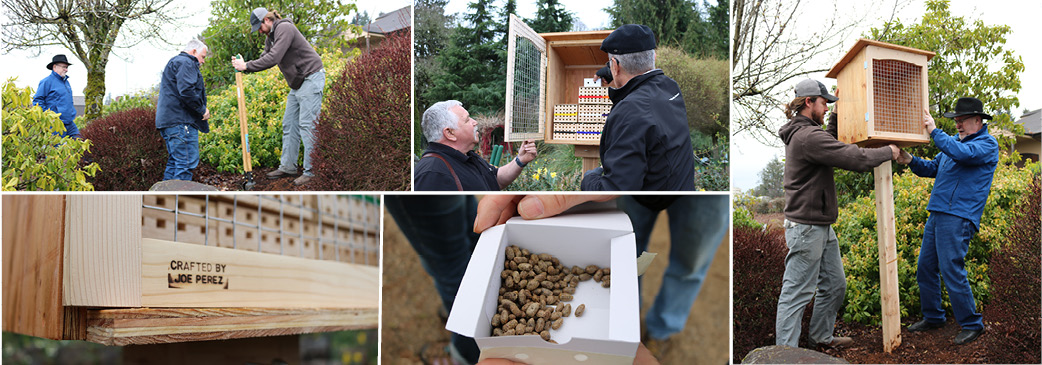
The bees build their homes in the smaller pre-made nesting boxes placed in each larger box. The nesting boxes contain a grid of channels perfect for the bees to nest and lay their eggs. Once the bees are settled, they begin to pollinate the surrounding area.
As the weather gets cooler and the bees are finished pollinating spring flowers and fruit blooms, they settle back into their cocoons for fall and winter and wait for the process to start all over again in the spring.
What is the benefit of having mason bees at the vineyard?
Placing the mason bee boxes at our vineyards provides the bees with a safe environment to nest and pollinate. With 40% of the insect population down and biodiversity declining due to agriculture and development, providing safe nesting places for these bees will help them thrive and replenish their population.
The bees don’t provide any specific benefits to the vines in our vineyard, as those are self-pollinating plants, but rather benefit the environment as a whole. This project is just beginning and our team hopes to learn more about the bees and provide them with a thriving habitat for years to come.
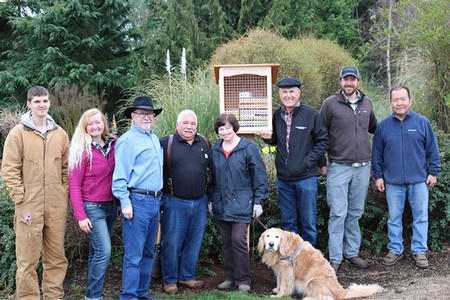
2018 Vintage Update
Our team took a few minutes to check in with our Head Winemaker, Joe Ibrahim, to get his opinion on our recent 2018 harvest and get an idea of what to expect with our 2018 vintage.
How was the 2018 harvest?
The 2018 Harvest was amazing! The growing season was warm and dry and that continued into the harvest season. Winemakers had their choice of pick days without the fear of seasonal rains, which allowed us to achieve the exact level of ripeness we wanted from the grapes.
How do the wines look?
The wines look fantastic! Each time we taste these wines we are so excited. The red wines are rich and dark in color with moderate alcohol levels. The early signs of complexity are starting to show in the completed lots and will continue to become more nuanced through the aging process. The white wine wines are bright and fresh and show a nice balance of fresh fruit with hints of tropical fruit, and good body weight.
What can we expect from this vintage?
Along with us, other Oregon wine producers also experienced an outstanding vintage. I think its safe to say that we will be seeing some great write ups on the 2018 vintage wines. 2018 will likely be known as one of Oregon’s best and will be argued to be the very best vintage. This will benefit not just us, but the industry as a whole as we continue to tell the story of quality wines coming out of Oregon.
Are there any stand-out wines you are excited about?
Its still early, but there are exceptional lots from all our estate properties. It was fun to get to know the new vineyard blocks from the Bernau Estate Vineyard and those wines look to be very strong. Bernau block Pinot Noir from our main estate and the new century blocks from Elton, as well as Peter Micheal, and Meadow View sections from Tualatin Estate are some of our top lots.
